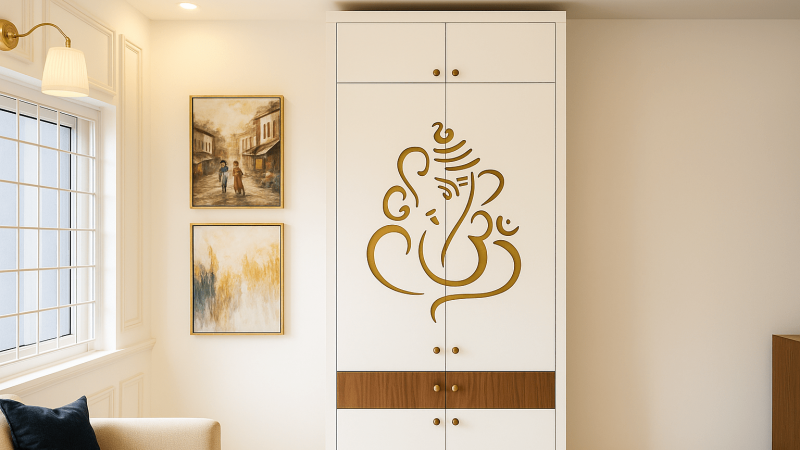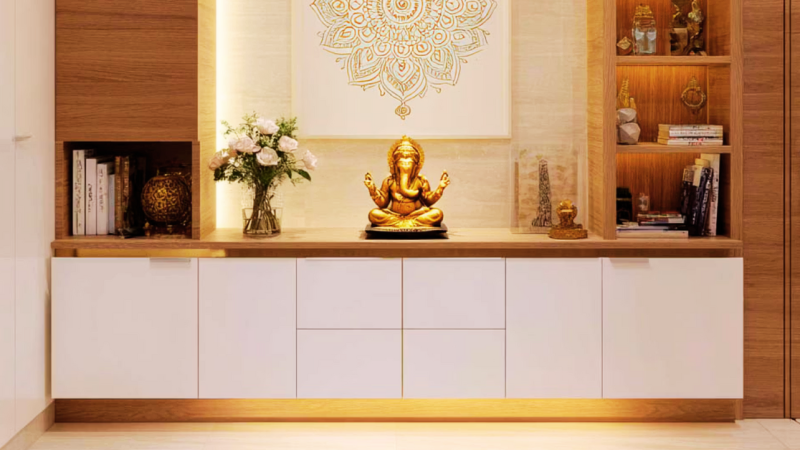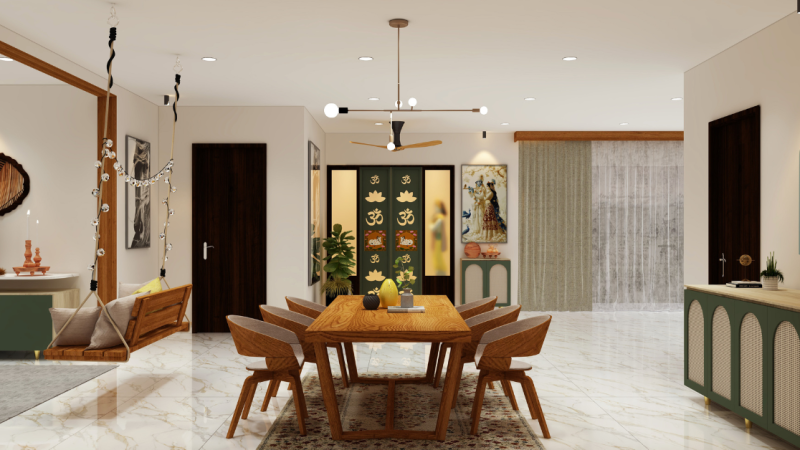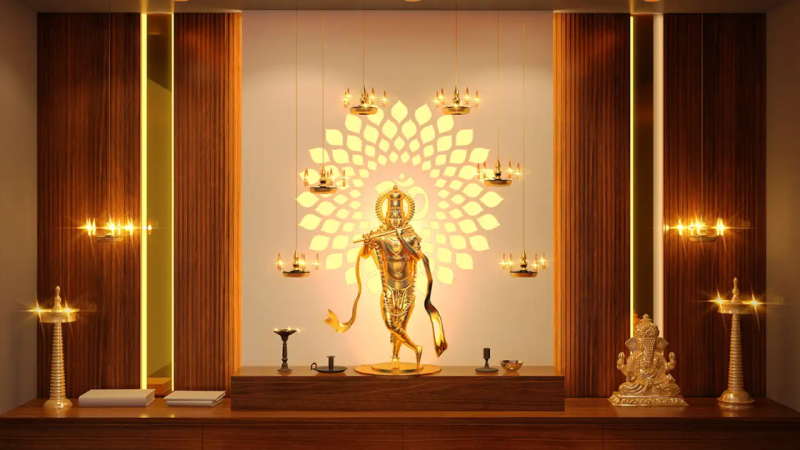Carved Wooden vs. Marble Pooja Units: Which One Should You Choose?
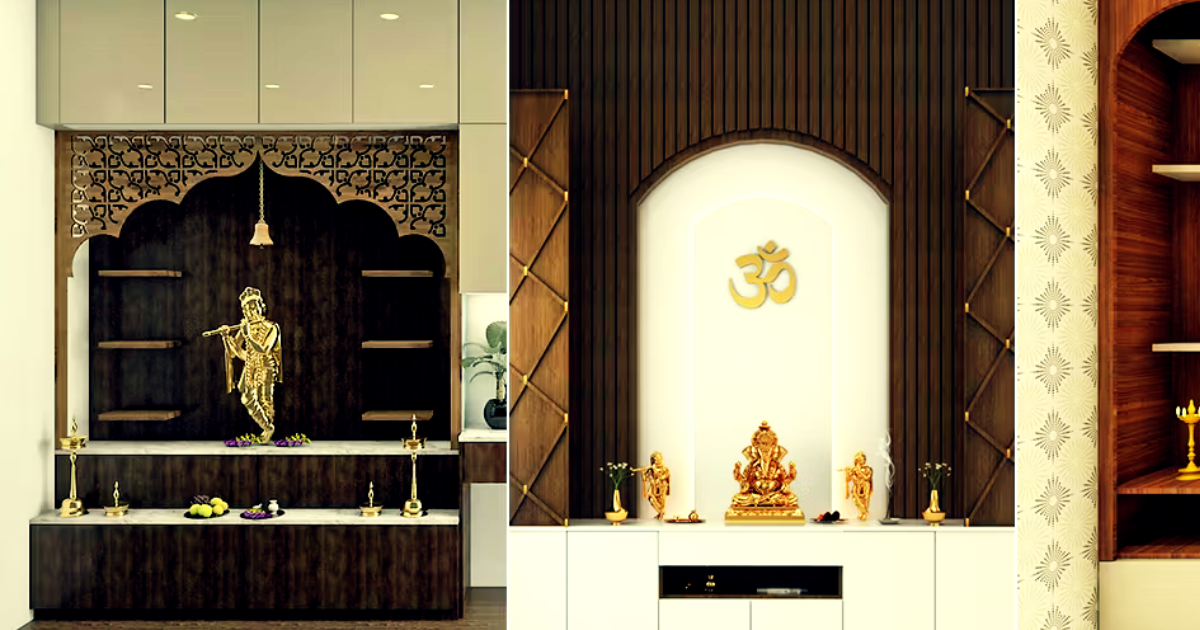
A pooja unit is an essential part of an Indian home, reflecting spirituality and devotion. Choosing the right material for a pooja unit plays a crucial role in aesthetics, durability, and maintenance. Carved wooden and marble pooja units are the most popular choices, each offering unique benefits. This guide will help you decide which material suits your needs best.
Aesthetic Appeal and Design
Wooden Pooja Units
Carved wooden pooja units exude warmth and traditional charm. They often feature intricate detailing, floral motifs, and handcrafted designs, making them a perfect fit for a traditional or ethnic interior. Wood varieties like teak, rosewood, and sheesham enhance the richness and elegance of the space. Wooden units can be further adorned with brass bells, jaali work, and intricate carvings to elevate their aesthetic appeal.
Marble Pooja Units
Marble pooja units, on the other hand, offer a luxurious and timeless appeal. They bring a sense of serenity and purity, making them ideal for contemporary and minimalistic interiors. The smooth finish and natural veining in marble create a sophisticated look that complements modern home aesthetics. Marble temples can be customized with gold inlay work, engraved deity figures, and traditional patterns to enhance their beauty.
Durability and Longevity
Wooden Pooja Units
Wooden pooja units, especially those made from high-quality hardwood, are durable and long-lasting. However, they require proper care to prevent termites, warping, and damage from moisture. Regular polishing and treatment can extend their lifespan. Over time, wooden temples may develop a vintage look, which can enhance their appeal if maintained well.
Marble Pooja Units
Marble pooja units are incredibly durable and resistant to pests, moisture, and heat. They do not require frequent maintenance, and their longevity makes them a worthwhile investment. However, marble is prone to stains and scratches, requiring careful handling to maintain its pristine look. Despite this, marble temples are highly resistant to wear and tear, making them a popular choice for long-term use.
Maintenance and Cleaning
Wooden Pooja Units
Carved wooden pooja units need regular dusting and occasional polishing to maintain their shine. The intricate carvings may accumulate dust, requiring extra care during cleaning. Moisture exposure should be minimized to prevent damage. A dry cloth or a soft brush is recommended to clean carved areas effectively. Additionally, applying a protective coat of varnish can help preserve the wood’s natural beauty.
Marble Pooja Units
Marble pooja units are easier to maintain as they can be wiped clean with a damp cloth. However, acidic substances like lemon juice or turmeric can cause staining, so immediate cleaning is necessary. Sealing the marble surface periodically helps in preventing stains and maintaining its shine. Using mild soap and a non-abrasive cloth can keep the marble looking new without damaging its surface.
Customization and Flexibility
Wooden Pooja Units
Wooden pooja units offer greater flexibility in customization. They can be handcrafted with specific designs, engravings, and carvings based on personal preferences. Wood can also be painted or polished in different finishes to match the decor. Custom wooden pooja units can feature hidden storage compartments for pooja essentials, drawers for incense sticks, and elevated platforms for idols.
Marble Pooja Units
Marble pooja units have limited customization options due to their rigid structure. However, they can be designed with intricate inlays, carvings, and traditional patterns. Various types of marble, such as white, black, or Makrana, provide options to suit different interiors. Some marble pooja units also come with gold or silver leaf detailing to enhance their divine appeal.
Cost and Affordability
Wooden Pooja Units
Carved wooden pooja units vary in price based on the type of wood and craftsmanship involved. High-quality hardwood and intricate carvings can increase the cost, but budget-friendly options in engineered or softwood are also available. The price of wooden pooja units also depends on the level of detailing, size, and any additional features like storage compartments or backlighting.
Marble Pooja Units
Marble pooja units are generally more expensive due to the cost of the stone and the labor involved in carving and polishing. While they are a long-term investment, the higher upfront cost may be a deciding factor for many buyers. Imported marble or customized marble temples with intricate carvings tend to be significantly more expensive.
Space and Placement Considerations
Wooden Pooja Units
Wooden pooja units are available in a variety of sizes, making them suitable for small apartments as well as large homes. Wall-mounted wooden temples are a great option for compact spaces, while freestanding models work well in larger pooja rooms.
Marble Pooja Units
Marble pooja units, due to their weight, require a dedicated space and a strong foundation. They are best suited for homes with a separate pooja room or an allocated corner with sufficient support. Unlike wooden units, marble temples cannot be easily moved, so their placement should be well thought out.
Vastu and Religious Significance
Wooden Pooja Units
Wooden pooja units are often recommended in Vastu Shastra as they bring warmth and positivity. They are considered ideal for home temples, especially when made from auspicious woods like teak or rosewood. The natural elements of wood help create a spiritual ambiance in the home.
Marble Pooja Units
Marble pooja units are also highly preferred in Vastu, symbolizing purity and divinity. White marble, in particular, is believed to enhance peace and positive energy in the home. However, Vastu experts suggest that the placement of a marble temple should be carefully considered to maintain harmony.
Environmental Impact
Wooden Pooja Units
Wooden pooja units, if sourced sustainably, can be an eco-friendly choice. Opting for FSC-certified wood ensures that the material comes from responsible forestry practices. However, non-treated wooden units may contribute to deforestation if not sourced ethically.
Marble Pooja Units
Marble pooja units, while natural and long-lasting, require intensive quarrying, which impacts the environment. The extraction process of marble consumes significant energy, making it less sustainable. However, since marble temples last for decades, they contribute less to frequent material wastage.
Final Decision: Which One Should You Choose?
Choosing between a carved wooden and a marble pooja unit depends on several factors, including budget, space, maintenance preferences, and aesthetic appeal. If you appreciate traditional craftsmanship, customization options, and a warm ambiance, a wooden pooja unit is the perfect choice. However, if you seek a long-lasting, luxurious, and easy-to-maintain option, a marble pooja unit is ideal. Consider your home’s decor, personal beliefs, and long-term usability before making a decision.

